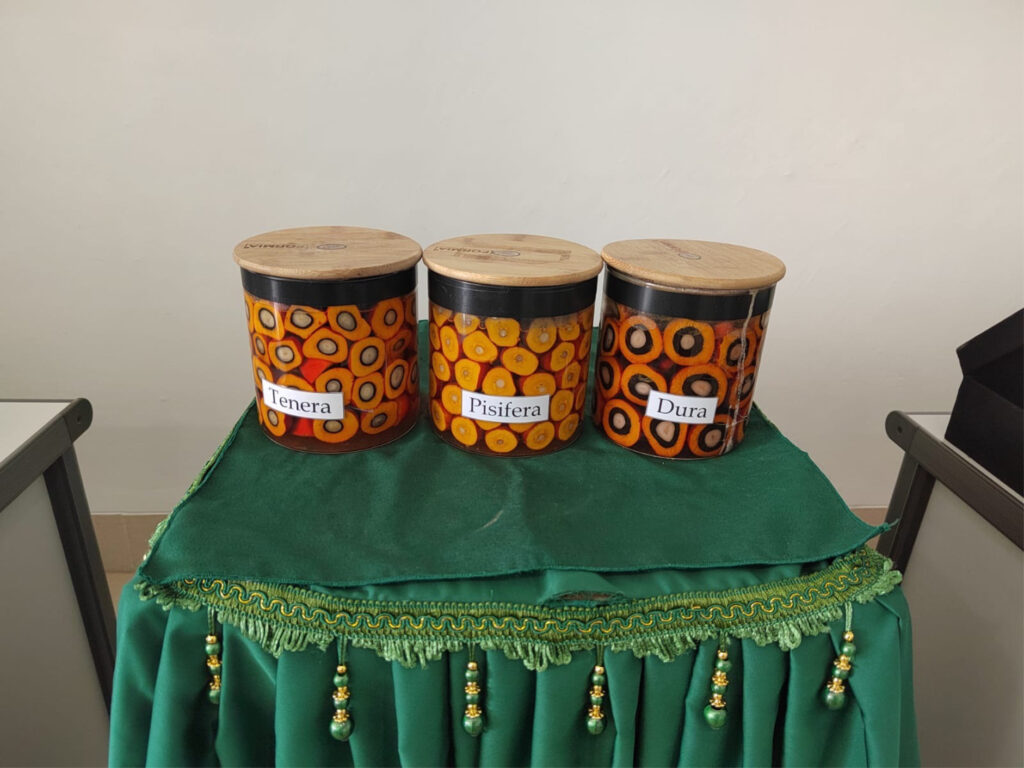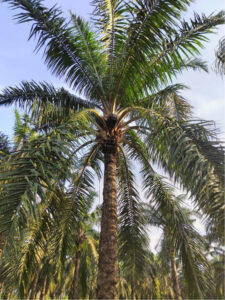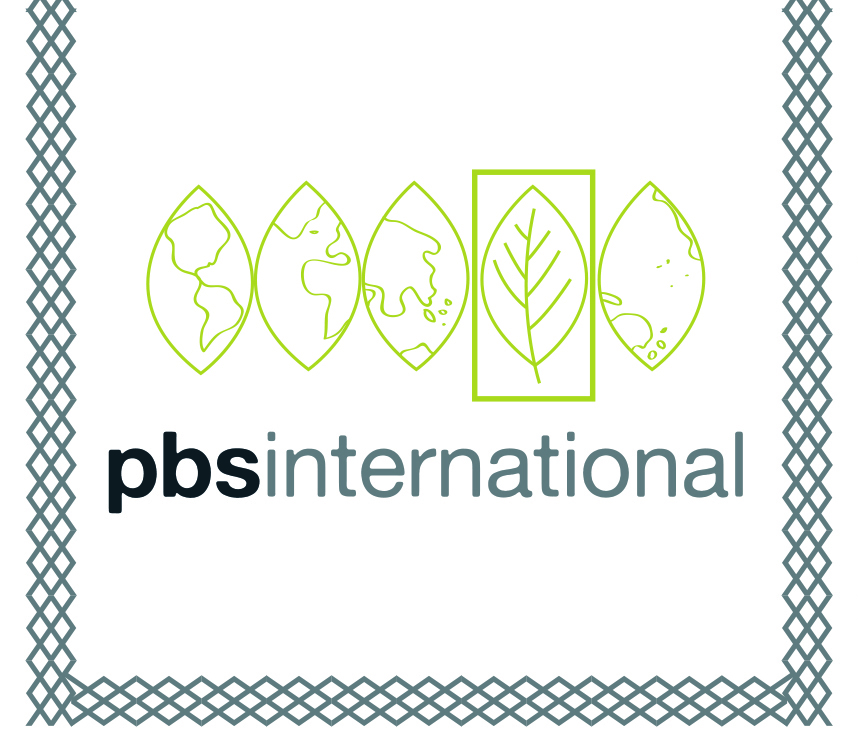At PBS International, we’re proud to support oil palm breeders around the globe with our pollination control products.
We develop pollination control bags (also known as selfing or crossing bags) for a wide range of crop types, including a dedicated line of products designed specifically for oil palm breeding.
Here, we’ll examine some commonly asked questions about oil palm as a crop, and how our proprietary duraweb® material helps breeders overcome oil palm breeding challenges.
Why is oil palm such an important crop?
Oil palm, or Elaeis guineensis, is an exceptionally versatile crop that has a wide range of applications. Originally grown in Guinea, Africa, but now also commonly grown in Southeast Asia, oil palm serves as the primary source for two types of palm oil – palm oil (extracted from the fruit), and palm kernel oil (extracted from the seed or kernel).
Palm oils have extensive uses across cooking, cosmetic, cleaning, and even biodiesel applications. Palm oil is now the most widely produced edible oil globally, accounting for 40% of the world’s vegetable oil supply while utilising less than 6% of the total land allocated to oil crops. Oil palm plantations can also produce high-yielding fruits for over 25 years [1], making them an extremely productive crop and meaning that oil palm is a significant contributor to meeting global oil demand.
What do oil palm breeding programmes set out to achieve?
Oil palm breeding programmes set out to maximise oil yield per hectare, which is done by breeding trees that produce more fruit bunches, and also more oil within those bunches. They also aim to improve disease resistance against fungal diseases such as Basal Stem Rot, which oil palms are prone to, and can even aim to breed desirable traits such as fruit bearing at lower heights to improve harvesting.
Why is pollination control important for oil palm?
There are three main varieties of oil palm – dura, pisifera, and tenera breeds. They are each characterised by their differences across the three layers within the fruits they yield – the oil-producing flesh, the kernel, and the hard shell.

Dura fruits feature a hard outer shell, while pisifera fruits have no shell at all. The tenera variety is produced by cross breeding a dura mother with a pisifera father, resulting in fruit that has a thinner shell and higher volume of flesh. [2] As a result, tenera breeds are the most desirable due to their higher oil yield compared to dura and pisifera, producing an average of 30% more oil per fruit bunch than dura – in fact, one oil palm breeding programme run by CSIR-OPRI reports yield potential of 22-26 tonnes of oil per hectare by an improved tenera breed (versus 0.5-1 tonne per hectare for local unimproved breeds).[3]
Closely managing pollination is therefore essential to maximising yield and breeding oil palms with the most desirable traits. For example, seed producers carefully manage pollination between palms to ensure that they do not end up with too many dura palms or contamination of dura pollen. Not only would this result in less oil yield, it also introduces new problems. For example, dura palms possess a strong aniseed-like smell, which attracts pests such as weevils. These pests can not only damage the palm, but also carry pollen from the dura palm and potentially cause cross-contamination, which impacts seed quality.
What are some of the challenges faced by oil palm breeders?
Oil palm breeders face a series of challenges when trying to maximise yields and meet global oil demands.
As explained above, one major challenge is carefully controlling the pollination of the oil palm to minimise the risk of high numbers of durapalms, as this can result in pest infestations and cause further issues with cross-pollination.
Other challenges arise from pollen collection – breeders manage pollination by securing pollination bags over the male inflorescence to collect pollen. However, the male inflorescence is spiky, which can tear through pollen collection bags made from materials such as canvas or paper.
Furthermore, as oil palm grows in wet, tropical climates, it can be difficult to control humidity, and it is not uncommon for bags made from cheaper, less robust materials to collapse against the inflorescence – which can result in contamination.
To overcome these challenges, it is important for breeders to invest in good quality pollination control bags that have been designed with these challenges in mind.
How can oil palm breeders achieve superior yields?
Independent research undertaken by oil palm specialists demonstrates that PBS International bags are superior for oil palm breeding compared with canvas and polyethylene (PE) bags. In terms of performance, the study compared the three bag types in three performance areas – ability to remain intact, insect presence, and water retention. The PBS International bags were the only ones that succeeded in all three of these areas – they did not collapse against the inflorescence, protected against insects, and minimised water build up.

The study also found that the PBS International bags yielded 13% more seeds compared to PE bags, and 6% more seeds than canvas bags. This translates to $97,000 more revenue compared with PE bags, and $49,000 more than canvas bags.
Improved seed yields also translate to lower associated costs, as fewer fruit bunches need to be produced to achieve the desired volume of seeds – resulting in further savings in terms of labour, administration, and processing costs.
Why are PBS International bags better for oil palm? The answer is our proprietary duraweb® material. All of PBS International pollination control solutions are made using duraweb®, which has been designed specifically for plant breeding. This material is strong enough to resist tearing and damage from spiky oil palm inflorescences while remaining flexible enough to tie tightly around the plant. The material also offers superior breathability, as it is made up of randomly laid fibres that make it hard for pollen to pass through, but allow for air and necessary gas exchange to take place. This helps to mitigate humidity build up, and also ensures that the bags maintain their structure and do not collapse when wet.
Which PBS International bags are best for oil palm?
We supply oil palm breeders with a range of bags in different sizes to accommodate different pollination control projects and goals.
For smaller male and female inflorescences, we recommend our 2D.1-1W, 2D.2-1W, and 2D.2-2W bags.
For male and young female inflorescences, we recommend our 2D.3-1W and 2D.3-2W.
For working with larger, established female inflorescences, we recommend our 2D.4-1W and 2D-4-2W.
If pollen collection is your goal, then our S.PC 100 Pollen Collector is suitable for collecting pollen from large inflorescences, and features a reinforced spout and detachable clear bag to make collection simple.
We also offer bespoke bag designs for custom projects – contact our team at sales@pbsinternational.com to learn more and request a quote.
Where can I purchase oil palm pollination control products?
PBS International ships selfing and crossing bags around the world to support pollination control and plant breeding projects.
To ensure that our products are easily accessible to oil palm growers, we work closely with exclusive distributors in Indonesia, Malaysia, and Colombia to supply our bags to oil palm growers in these regions.
To place an order for oil palm products in Indonesia, contact our Indonesian distributor
To place an order for oil palm products in Malaysia, contact our Malaysian distributor
To place an order for oil palm products in Colombia, contact our Colombian distributor
If you’re based outside of these three regions, or have any further challenges you would like our support on, contact our team today to see how we can help: sales@pbsinternational.com
References:
[1] Interview with Dr Celestine Ikuenobe, October 2024. https://www.pbsinternational.com/news/breeding-superior-seeds-for-nigerian-oil-palm-producers/
[2] Goh, K., Wong, C. K., & Ng, P. H. C. (2016, August 27). Oil palm. In Encyclopedia of applied plant sciences (pp. 382–390). Academic Press. https://doi.org/10.1016/B978-0-12-394807-6.00176-3
[3] ‘Oil Palm Programme’ CSIR-OPRI. https://oilpalmresearch.org/ar/projects/research-programs/oil-palm-programme


